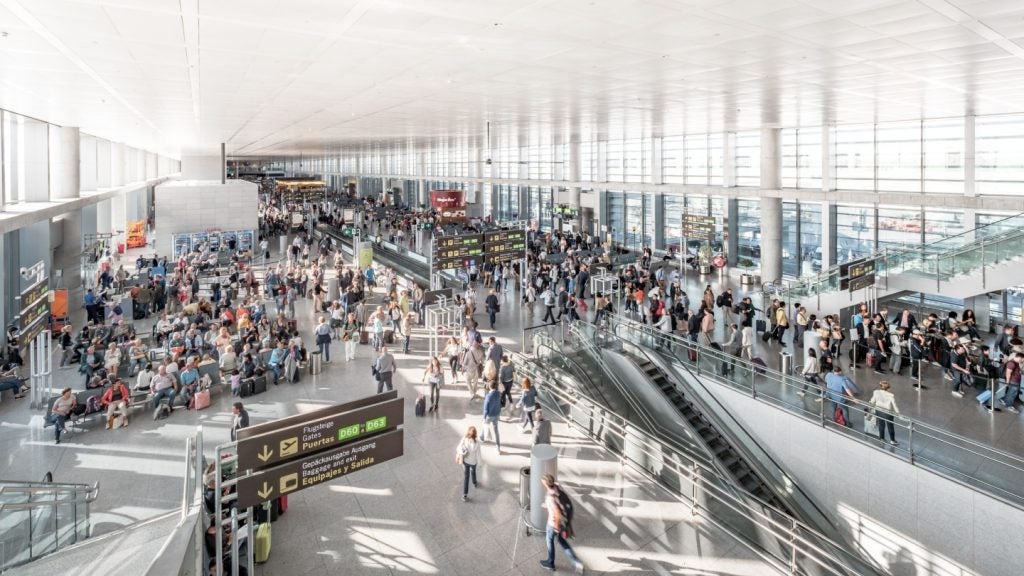
Over the past few years, the aviation industry’s centre of gravity has started to shift eastwards, particularly towards China.
The number of flights into the country has grown exponentially in the last 20 years. In 1982, there were less than four million Air passenger journeys into China, according to the Civil Aviation Administration of China; by 2016, that number had reached 487 million.
Part of this huge increase can easily be put down to the general opening up of the aviation sector, which quickly turned from a luxury experience of the privileged few to a much more affordable means of travel.
But that isn’t the whole picture. Tapping into the Chinese travel market is proving to be incredibly profitable. An economic superpower worth $11.2tn, China ranks second in the world in terms of passenger and cargo turnover by air, behind the US. By 2024, the International Air Transport Association (IATA) predicts it will finally overtake the US to become the world’s largest aviation market.
Lately, more and more airports are realising the opportunities to be derived from opening up direct flight routes into China’s biggest cities – as long as those routes are mostly served by household Chinese carriers.
‘The China Dividend’
In the midst of Heathrow’s battle to get approval for its third runway, the airport commissioned New Frontier Economics to research the economic impact of direct air connections to China, which are expected to grow in number if the expansion project gets the green light.
How well do you really know your competitors?
Access the most comprehensive Company Profiles on the market, powered by GlobalData. Save hours of research. Gain competitive edge.

Thank you!
Your download email will arrive shortly
Not ready to buy yet? Download a free sample
We are confident about the unique quality of our Company Profiles. However, we want you to make the most beneficial decision for your business, so we offer a free sample that you can download by submitting the below form
By GlobalDataThe study revealed that just one additional flight per week on each existing connection (the airport currently offers routes to Hong Kong, Beijing, Shanghai, Guangzhou and Qingdao) could generate an additional £16m in GDP to the UK economy over a year. At present, there are more than 100 direct flights from Heathrow to China every week, contributing £510m annually and creating 14,550 jobs.
Of the five routes, Hong Kong is by far the most profitable, bringing in £315m per year in GDP. Just one additional weekly connection to the city would bring an additional £5m per year.
“Heathrow is proud of its role as a gateway to these vital Chinese markets,” the airport’s chief executive John Holland-Kaye said. “As the country prepares to leave the EU and China’s economy continues to grow exponentially, this is an opportunity the UK cannot afford to miss.”
Australia’s Sydney Airport recently reported equally impressive gains from its Chinese routes. Announcing its latest Tianjin Airlines service from Zhengzhou, to depart twice-weekly starting March this year, the airport’s CEO Geoff Culbert said the route will bring an extra 14,000 Chinese visitors to Australia and will drive an estimated A$60m into New South Wales’ economy each year.
China is one of Australia’s fastest-growing inbound tourism markets; local airlines have been adding new nonstop services from both primary and secondary cities to Australia in recent years. Sydney Airport itself has been pushing to attract more Chinese visitors through a range of measures, including by becoming the first organisation outside greater China to use Baidu Maps, a popular mobile navigation service.
The two airports’ eagerness to expand mirror a wider trend that indicates that opening up more routes to the Asian superpower equals sure economic gain.
In December last year, the UK and China made a landmark agreement allowing the total number of flights between the two countries to increase by 50%, from a maximum of 100 passenger flights per week to 150 under the new deal. Commenting on the agreement, UK transport secretary Chris Grayling said it would allow for huge expansion in routes from regional airports, potentially boosting local economies by hundreds of millions of pounds by opening up new business and tourism opportunities.
Grayling’s comments are supported by the findings of a report undertaken by experts at Steer Davies Gleave, titled ‘The China Dividend’. A year after the opening of the UK’s first ever direct service to mainland China outside of London – a new Hainan Airline service at Manchester Airport – the route carried 90,000 passengers between Manchester and Beijing, 15% higher than originally planned for. The list of accrued benefits from the service is hefty, including increases in inward investment projects, a total visitor contribution of £138m annually, and a spike in Chinese interests in property in Manchester, to name but a few.
Chinese travellers: eager to explore
‘Increased connectivity’ is certainly a hot concept, and a favourite term among industry insiders. It is almost invariably used as a synonym for economic profit, but how do more direct connections actually drive an influx of cash into the economy?
“Improved connectivity gives Chinese-based businesses greater access to foreign markets, encouraging exports, and at the same time increases competition and choice in the home market from foreign-based producers,” IATA explains. “[It] can also enhance an economy’s performance by making it easier for firms to invest outside their home country, which is known as foreign direct investment (FDI).”
Experts behind the Heathrow study offer further insight into how the expected benefits of increased direct routes into China were calculated.
Simply put, direct flights are far quicker, cheaper and more convenient than flying indirectly, meaning it is easy to assume that some passengers who would not travel otherwise, choose to do so once a direct connection becomes available.
Apart from the obvious tourism spend, attracting these new passengers increases the ease of face-to-face meetings, which are seen as crucial in building a solid business relationship, increasing the likelihood of closing deals and reaching new trade and FDI arrangements. These new business investments and opportunities are the building blocks of an open economy, which is likely to be more productive in the long term, and will contribute more to a country’s GDP.
Automatic success? Not exactly
Opening up a new route into China, however, doesn’t automatically equal success, as some airlines have learned.
In 2016, a number of European airlines were forced to close certain secondary Chinese routes because they were unprofitable. British Airways closed its route from Heathrow to Chengdu because it was “not commercially viable”, while German carrier Lufthansa axed its Frankfurt to Shenyang route due to low passenger demand and declining forward bookings. (Lufthansa revived the route in March this year, with three flights a week from to the Chinese city.)
In the US, United Airlines faced a similar fate when it was forced to quit its services to Hangzhou.
The reason? Chinese travellers prefer to fly with Chinese airlines, due to comfort, trust and familiarity.
The country’s ‘big three’ carriers – China Southern, China Eastern and Air China – each reported more than 100 million passengers in 2017, and there is plenty of room for growth. According to transport intelligence platform Skift, the three airlines are increasingly flying passengers from the mainland to Europe and the US without stopovers in Hong Kong or Singapore.
When it comes to profitable routes, the numbers certainly speak for themselves. Airports (and the wider economy of a country) can do a lot worse than branching out directly to China, as interest in travelling, investing and exploring is booming on all sides. However, tapping into that potential in a smart way is crucial.





